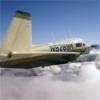Speed Brakes on Vintage Mooneys
-
Members Online
- ta2too
- CanadianMooniac
- WilliamR
- Pinecone
- sdmideas
- BlueSky247
- Marc B
- Parker_Woodruff
- daytonabch04
- FlyngDude
- JustusSJ
- Anthony C. Roberts
- GMBrown
- Semper Mooney
- Skyland
- LOCOLJ
- ericrynehess
- NickG
- toto
- PT20J
- haymak3r
- Fly Boomer
- ArtVandelay
- PMcClure
- MB65E
- EKoS
- 1980Mooney
- ElkoRandy20J
- Slick Nick
- AndreiC
- dkkim73
- MikeInSaus
- Ian Jeffries
- DXB
- larryb


Recommended Posts
Join the conversation
You can post now and register later. If you have an account, sign in now to post with your account.